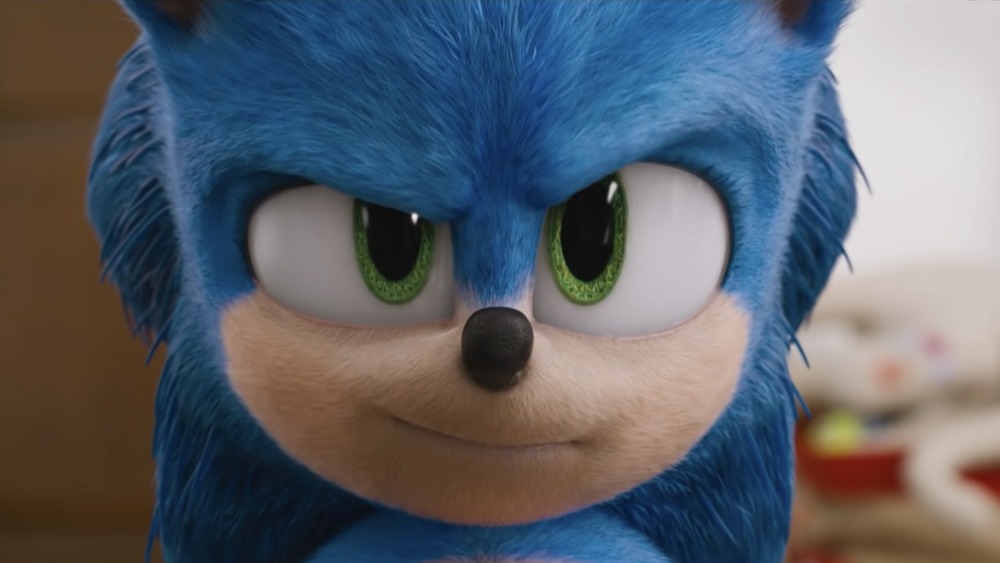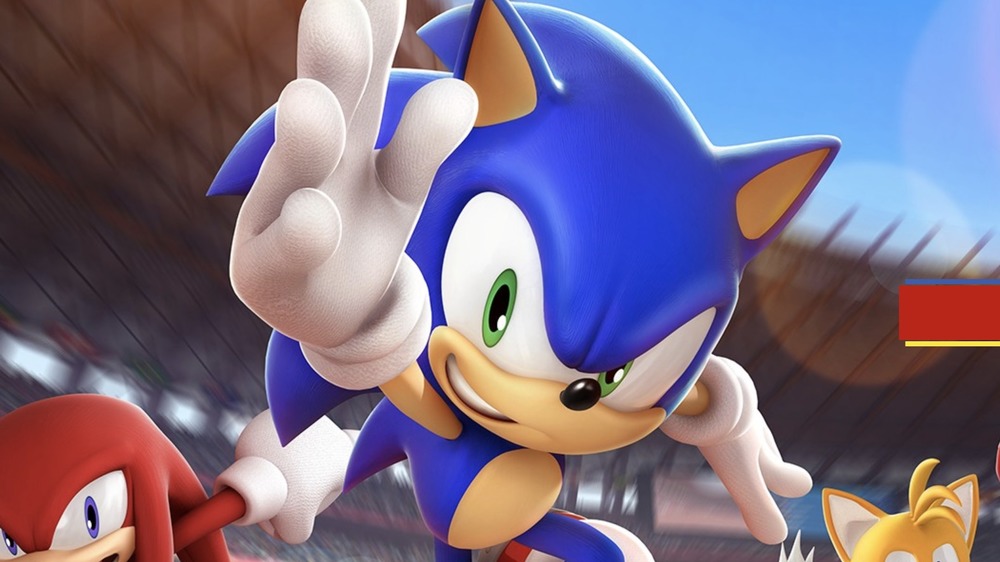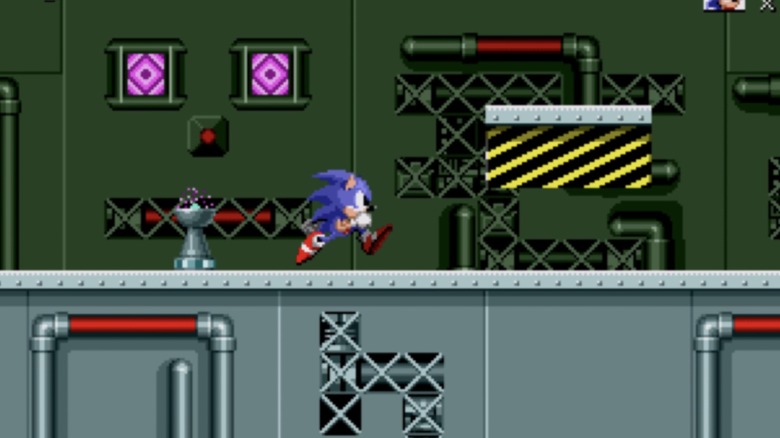How The Public Influenced The Creation Of Sonic The Hedgehog
Sonic the Hedgehog wasn't Sega's first mascot, but he's clearly the best-known and most-beloved mascot that Sega developed. (Anyone remember Alex Kidd?) The speedy blue hedgehog's origin story has become legendary because it was so important to Sega that it develop a character that could become the protagonist of his own set of games while standing toe-to-toe with Nintendo's Mario. It doesn't necessarily seem intuitive that Sega settled on an obscure, spiky mammal to take attention away from the portly Italian plumber that first became a star in Donkey Kong – yet, years after Sega stopped being a dominant player in the video game industry, Sonic prevails in pop culture.
In creating Sonic, though, Sega's executives were savvy: They left nothing to chance. They drew upon the public — in a couple of separate instances — to make sure Sonic would become an accepted name and face for the company. Here's how that happened, and how popular opinion helped make Sega's Sonic the Hedgehog a household name.
Sonic in Central Park
In 2018, at the Game Developer Conference, designer Hirokazu Yasuhara talked about the creation of Sonic, which was by no means an easy decision. Sega wanted a character that could curl up into a ball and roll around to deal damage, he said, but there were other options for the look of the mascot, as developed by Sega's team AM8.
"[Sega said] we definitely want to see something like an old guy with a moustache," Yasuhara said in a discussion reported on by Eurogamer. "We also want to see something like a hedgehog, or porcupine, as well as a dog-like character."
So, to narrow down the options, Yasuhara planned a trip to New York. Taking sketches of the characters with him, he surveyed random people in Central Park to find out which one most resonated with Americans. He found that the hedgehog was most popular, followed by the "old guy with a moustache" (who later became Sonic's antagonist, Eggman), and the dog character.
Yasuhara came to the conclusion that the hedgehog character "would transcend race, gender, different types of people — everything." He reported his results to Sega, and Sonic was greenlit for stardom.
Sonic vs. Mario
When Japanese executives introduced Sonic the Hedgehog to its American division, though, they were skeptical. Sega of America president Michael Katz wasn't on board becasue he didn't think anyone knew what a hedgehog was. But Katz didn't last much longer at Sega: He was soon replaced by Tom Kalinske, who did understand and appreciate the Sonic the Hedgehog game concept.
"I was a little more pragmatic about it. I thought it showed off the attributes of 16-bit very well — the speed of movement and the colourful graphics," Kalinske told Kotaku. "Then our marketing team did a bunch of revisions on the original Japanese character design so that it was acceptable for the US market." This included removing Sonic's fangs, adding red shoes, and '86ing his well-endowed girlfriend named Madonna.
But Kalinske also wanted proof that Sonic would provide the results Sega wanted. So, Sega's global head of marketing Al Nilsen went around the country and play-tested Sonic the Hedgehog "with ardent Mario lovers," as Nilsen told Kotaku. After playing the game, 80 percent of those die-hard Mario fans chose Sonic instead.
Sonic the Hedgehog released in June 1991, and the rest is history.



